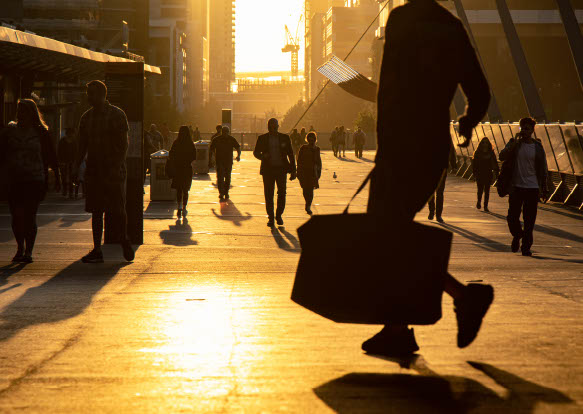by Jonathan Levine
Business development and operations lead (UK) King Safety and Security Ltd
“If it looks wrong, sounds wrong, or feels wrong, then it probably is”
At some point in their life, everybody is likely to experience a stressful or dangerous situation, and this becomes a near certainty for those who operate consistently within the private security industry.
Understanding body language can reduce risk
Fortunately for profilers and protectors, the human body has a recognisable built-in stress response to threatening situations called ‘fight, flight, or freeze.’
Understanding and identifying these natural responses to threat or danger can help us to better understand the intentions, emotions, and motivations of others, and creates valuable opportunities to mitigate risk by engaging or extracting.
Humans communicate to the world through their actions and patterns of behaviour, giving away subtle clues and signals all the time. Like any language, it can be learnt, and interpreted.
How the body reacts to threats
Hostile actors, just like predators in the wild, select their victims based on signals given off by potential prey, and like prey, a predator will also give off signals which can be observed and used to our advantage.
The body’s stress response to a perceived threat or danger and when preparing for action is to release the hormones adrenaline and cortisol, preparing the body and mind for what it might have to do to survive.
The heart rate elevates, digestion slows, and we lose fine motor skills as blood flow is directed to major muscle groups, giving the body a burst of energy and strength to enable a person to fight or flee a threat. These physiological changes are numerous and therefore almost impossible to completely disguise.
A potential attacker or someone preparing to carry out a criminal act against a principal may be consciously or inherently skilled at reading body language, as it’s how they choose their victim or target. Its well documented that victim mentalities and postures can ironically leave someone more prone to attack. However, we can also use our knowledge to turn the tables and highlight an individual who is a potential threat. In the same way, the body prepares to defend itself, a potential attacker’s body will have similar visible cues.
The body language of an attacker
As a person prepares for action their body begins to dump adrenaline into the bloodstream. As adrenaline levels increase the pupils will dilate, the heart beats faster and harder, and the body begins to produce excess perspiration. When the pulse increases it is sometimes noticeable in the neck.
Mouth breathers are a source of amusement for some but there is a reason why people breathe through their mouths: as the pulse rate increases the body needs more oxygen. Be aware of increased breathing cadence. The chest is a key area to watch, men and women are different in that most men typically breathe from their stomach whereas women breathe from their chest. In a stressful situation, this role may be reversed.
A key area to monitor for clues of an impending attack are the shoulders, look for a tense stance that has the shoulders raised higher than usual. Note that when attention is focussed on the target an attacker often develops tunnel vision – and some people may become monosyllabic.
The arms and hands are likely to be used during an attack, so look for aggressive signals such as crossed arms or clenched fists. Where are the hands? Could a weapon easily be concealed and produced? A balanced, low stance could be an indication of combative training.
In order to read an individual successfully, you need to assess the person’s entire physiology, quickly. Follow a mental checklist such as stance, hand placement, and repetitive unnatural movements.
How situational awareness can help you spot a potential attacker
A key element underpinning body language detection many seasoned security professionals will identify with is situational awareness. This “art” is learned and honed over years of experience on the ground, however, the process can be expedited by incorporating certain habits into your processes.
Spend time base-lining the behaviour of crowds or people in new locations. What is the “normal” profile of behaviours for where you are? In a coffee shop, for example, most people are enjoying a hot beverage, talking with a friend, or on a phone or laptop.
Ask yourself: What are people paying attention to? What or who doesn’t fit the environment? What is their reaction to you, or your principal? What is in their hands? Why are they wearing bulky clothing on a hot day? Are they behaving differently from everyone else? Where is their focus, do they need to be there?
We can employ these techniques to help detect someone carrying out hostile reconnaissance.
A person gathering information on a location, event, or potential target might visit the location a number of times to profile the level and quality of the security, determine the best method of attack, and establish the optimum time to execute their plan.
Look for behaviour that differs from the norm. How does someone react to the presence of uniformed security or Police? Are they taking a significant interest in parking areas, delivery gates, doors, and entrances, or the location of CCTV cameras and controlled areas? Are they taking pictures, making notes, or sketches of the security measures? Someone engaging in filming for hostile purposes may film from an unusual angle. Have you noticed the same person or people on multiple occasions?
Before the London attacks on 7th July 2005, the bombers staged a trial run nine days before the actual attack.
Conclusion
Body language detection and situational awareness are crucial and are an art as much as a science, and takes constant effort and consistent application to develop. This subject is expansive with many materials available for further reading. Please contact me for links to further information, or view our accredited training courses as recommended by KSS.

